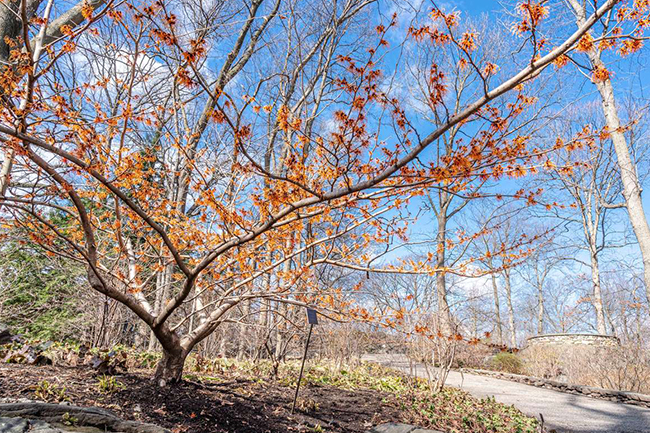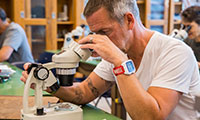The NYBG Botany Certificate Program is designed to deepen a student's scientific understanding of the plant kingdom. Students engage in subjects such as native flora, ethnobotany, ecology, and botanical nomenclature. Courses reflect the Garden's strengths in botanical science research, as well as its world-famous and unequalled resources—the William and Lynda Steere Herbarium, housing some 7.4 million dried plant specimens, and the LuEsther T. Mertz Library, with its collection of more than one million cataloged items and 11 million archival documents.
During the course of the program, students will come to know plants: how they function, grow, develop, and reproduce; and learn to identify a wide array of plants by stems, leaves, flowers, and fruits.
Those in pursuit of a Certificate must complete 169 total course hours (111 required + 58 elective). Browse this page to discover what required courses are currently scheduled.
January
|
|
|
|
In class and in forays around the Garden, you'll learn to recognize the winter characteristics of native and common woody plants by bud types, leaf scars, fruit remnants, and other distinguishing marks.
|
|
263BOT332
|
01/15
|
Th
|
10:00am-1:00pm
|
Slowik
|
NYBG
|
February
|
|
|
|
Get
a
solid
grounding
in
the
basic
plant
body-from
the
cell
to
the
roots,
stems,
leaves,
flowers,
and
fruit.
We'll
use
dissecting
and
compound
light
microscopes
to
observe
plant
anatomy,
then
introduce
the
base-level
chemistry
required
to
understand
the
world
more...
|
|
263BOT315C
|
02/02
|
Mo
|
11:00am-2:00pm
|
Zumajo
|
NYBG
|
March
|
|
|
|
Get
a
solid
grounding
in
the
basic
plant
body-from
the
cell
to
the
roots,
stems,
leaves,
flowers,
and
fruit.
We'll
use
dissecting
and
compound
light
microscopes
to
observe
plant
anatomy,
then
introduce
the
base-level
chemistry
required
to
understand
the
world
more...
|
|
263BOT315DO
|
03/01
|
Su
|
10:00am-1:00pm
|
Bijkerk
|
ONLINE
|
|
|
|
|
We will cover the role of plant hormones in growth and development, as well as plant movement, water transport through the plant body, and plant metabolism, including photosynthesis and respiration (anaerobic and aerobic).
|
|
263BOT316
|
03/17
|
Tu
|
4:00pm-7:00pm
|
Alvarez
|
NYBG
|













 Cart (0)
Cart (0)
